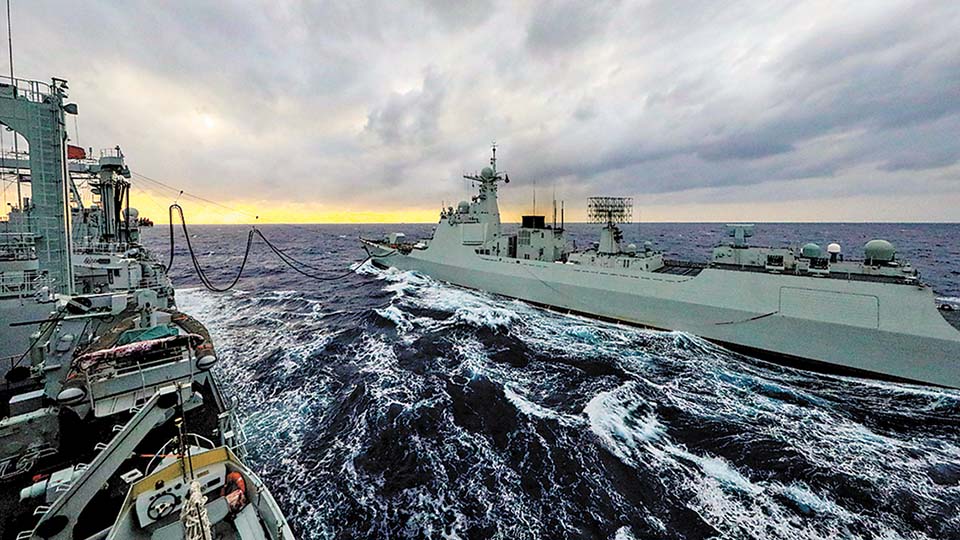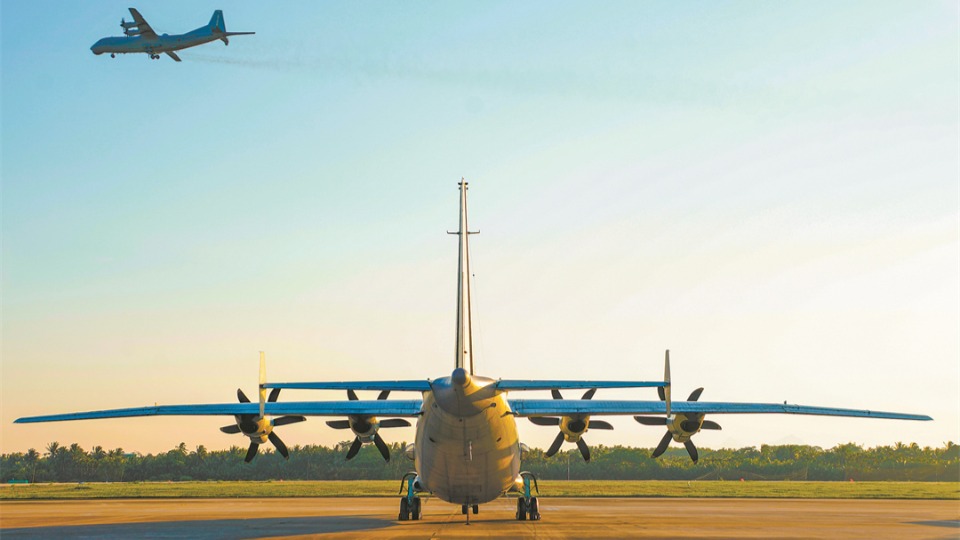By Wei Liqun
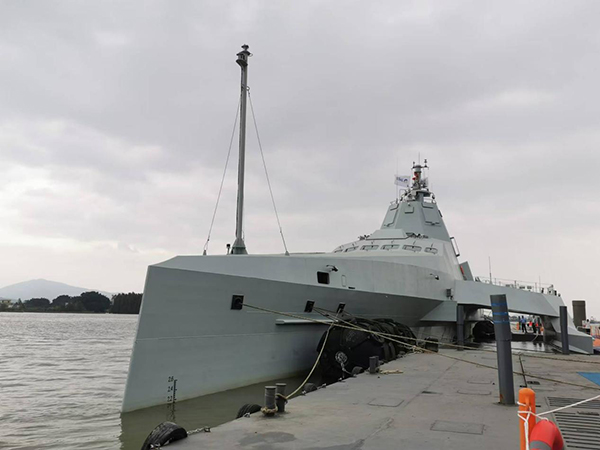
The large unmanned combat vessel "Orca" adopts a trimaran design, a shape from science fiction.
BEIJING, Nov. 18 -- The 15th China International Aviation and Aerospace Exhibition (Airshow China) provides a window for observing China's latest breakthroughs in military technology. At the airshow, apart from new equipment in aviation and aerospace, weapons and equipment in the fields of land, sea and electronic information also become the focus of attention. Among them, the large unmanned combat vessel "Orca", which made its debut this time, is one of the exhibits that have attracted the most attention both domestically and internationally.
According to the official source, the "Orca" is a 58-meter long, 23-meter wide, 4-meter deep, and 500-tonne high-speed stealth unmanned surface combat vessel. It is equipped with a diesel-electric dual-mode propulsion system, providing it with a maximum speed of 40 knots (74 kilometers per hour), and a range of more than 4,000 nautical miles(7,400 kilometers). As an autonomous combat vessel, it is like a mobile fortress on the sea which is capable of undertaking tasks such as beyond visual range (BVR) fire strike, air and missile defense, and anti-submarine search and strike.
From the first sea trial in 2022 to the public debut in 2024, China built the "Orca" in only two years. This indicates that China has solved the problems plaguing large unmanned vessel development including large-scale platforms, modular functions, specialized payloads, diversified power sources and operational method coordination. It also demonstrates that China's unmanned vessel design capability is approaching the "realm of freedom".
Getting rid of the human physiological limitations, the "Orca" can continue high-intensity operations and sail on the high seas for a long time, thereby effectively releasing the burden on personnel, freeing manpower from heavy, dangerous or boring tasks and concentrating resources on more critical strategic missions. Such platforms can regularly carry out non-military and military operations of low to medium intensity, such as patrol and guard around strategic points, base ports, islands and reefs, and key waterways.
The unmanned vessel has the following three prominent features:
The first feature is the large tonnage. The "Orca" is a large unmanned vessel with a displacement of 500 tonnes, which means that it has excellent self-sustaining capability and outstanding performance in endurance, sailing stability and resistance to waves. At the same time, the large tonnage allows it to install more combat modules, incorporating the anti-ship, air defense, anti-submarine and other tactical capabilities of large surface vessels. Furthermore, relevant modules can be added and removed according to different needs.
It can be seen that the "Orca" is equipped with four phased array radars and a general-purpose vertical launching system. It can carry rockets, anti-ship missiles, air defense missiles and remote-control weapon stations, and can conduct coordinated operations with the Z-5B/G unmanned helicopter onboard it to achieve powerful firepower integration on the small platform. There is also a small docking bay at the stern, which can be used to launch and recover small underwater devices or various detection and reconnaissance sensors, such as sonobuoys or radar buoys.
The second feature is the stealth capability. Large vessels and anti-submarine patrol aircraft pose main detection threats to unmanned vessels like "Orca". The high-level radar-wave stealth design provides such unmanned vessels with detection advantages over large ships under long-range conditions, whether beyond visual range or not, and concealment advantages over detection radars of anti-submarine patrol aircraft under certain support conditions.
The third feature is the excellent dynamical structure. Seen from the design, the "Orca" adopts a unique trimaran structure, giving it excellent stability and enabling it to sail steadily under harsh sea conditions. Moreover, it is equipped with a diesel-electric dual-mode propulsion system that provides enough power and stability to ensure not only fast response but also operation in low noise mode, making the enemy more difficult to detect it.
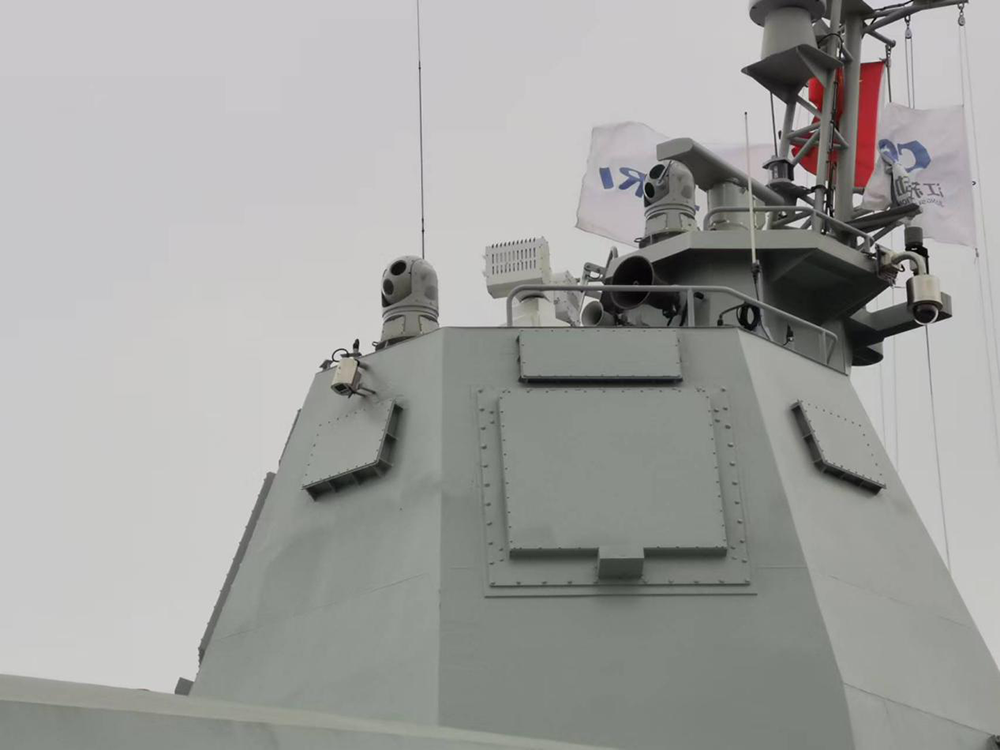
Electronic equipment such as phased array radars and photoelectric detection devices are integrated into the mast of "Orca".
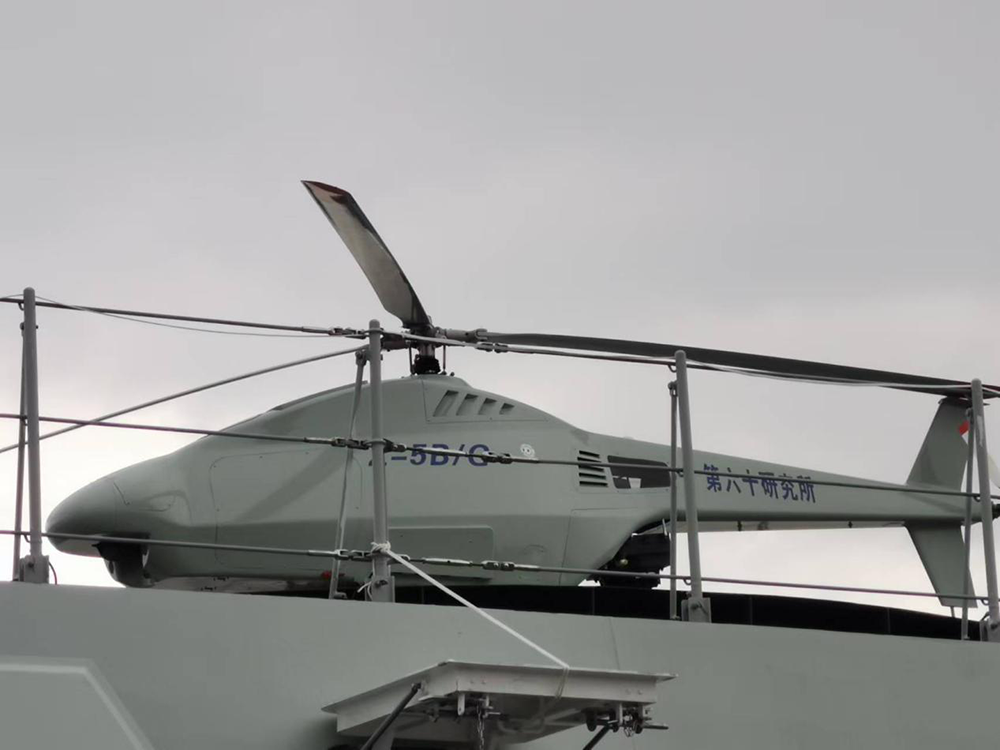
The helicopter deck of "Orca" can carry an unmanned helicopter.
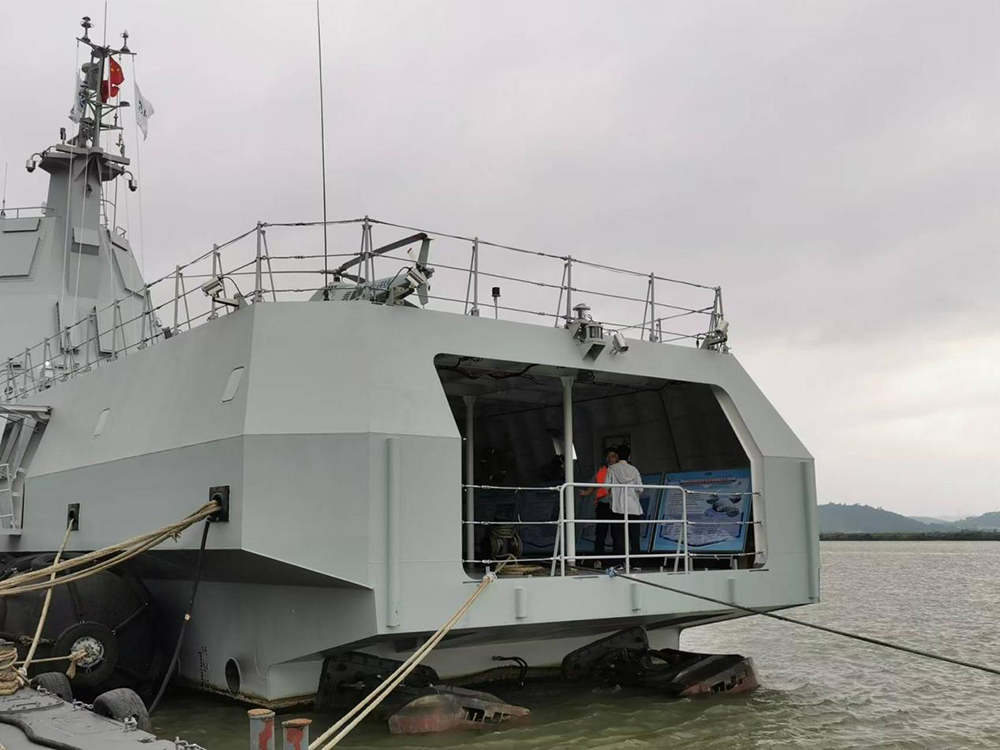
Relevant equipment can be placed in the stern cabin of "Orca" according to different needs.











